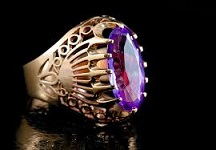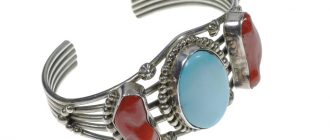Looking for Portuguese gold jewelry? Interested in Portuguese gold rings & earrings? Read our guide for facts & information…
Some of the finest examples of craftsmanship and lasting value can be found in Portuguese gold jewelry from Portugal. This is particularly evident in the gold rings and earrings that originate from that country.
It is worth noting that all gold sold in Portugal is supposed to be 19.2 karats. Gold jewelry in Portugal must by law be 19.2 karat pure. The marking of 800 translates to 80% gold, or 19.2 parts out of 24 (24 parts being 24 karat gold, 100% pure). Much of gold jewelry sold in Europe is marked 750, which equals to 75% gold content, or 18K, 18 out of 24 parts gold.
Portuguese Gold Rings
Portugal has long been renowned around the world for its vintage or antique rings and the tradition continues to this day.
Although gold rings that feature filigree are now quite common. Filigree rings have a longstanding tradition in Portuguese gold jewelry. One can trust the generations of goldsmiths in Portugal to continue to produce fine examples of filigree. Such rings stand out as distinct, unlike rings with other settings where the band is simpler or made of plain metal with gemstones inset into the metal or held in place with mere claws or teeth. A filigree ring typically features a delicate latticework in a pattern that is wrought in the metal. The intricate basket-like lace work surrounds the top of the ring or cradles the gemstones in a striking fashion. A filigree ring made of fine gold from Portugal makes an ideal engagement ring.
One should be aware that filigree engagement rings can cost a considerable sum. However their value endures and their immediate impact on a loved one may well make one worth it.
Portuguese Gold Earrings
Gold earrings from Portugal exemplify the same tradition of high-quality craftsmanship and are also governed by the same requirements for purity that specify 19.2 karat gold.
One part of this tradition is the Portuguese Queen Earring. In the past the quality of earrings that a woman wore were a sure indication of that woman’s place in society. In Portuguese the word “Rainha”, which translates as queen, came to indicate a particularly ornate style of earring that signified the high status or great wealth of the owner.
This type of earring is still worn by Portuguese women to this day. However they most often adorn a woman’s ears at events that partake of other traditions such as folk dancing. Regardless of their place in modern society the tradition of queenly quality persists in most of the gold earrings produced in Portugal today.





